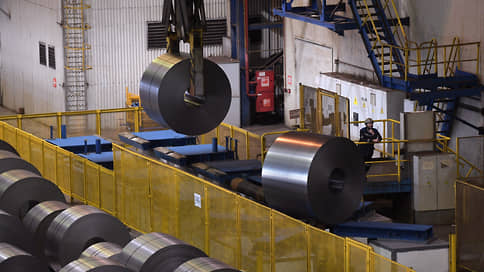Construction pulls steel behind it
[ad_1]

Russian metallurgists note a sharp increase in steel consumption in the domestic market in the first half of the year: according to MMK, it grew by 10-12%, mainly due to construction. The company also notes a recovery in demand in the automotive and railcar industries. At the same time, growth will slow down in the second half of the year: according to experts, steel demand will grow by 2% by the end of the year, mainly due to the low base effect of 2022.
Demand for steel in Russia in 2023 may grow by 3-5% compared to last year, Ilya Nechaev, MMK’s Investor Relations Manager, told Gazprombank Investments. According to his estimates, in the first half of the year growth in demand for steel products amounted to 10-12% due to the construction sector, where consumption grew by 14-16%.
The company, which has traditionally been focused on the domestic market, expects a record shipment of products to the Russian market. “Our load on the Russian market this year, I would say, will be a record. We average over the second quarter and see the current workload of the third quarter, ”TASS quotes Mr. Nechaev. According to him, the company shipped to the domestic market an average of 800,000 tons per month, and in the CIS, sales were expanded to a corridor of 120-150,000 tons.
According to the results of the first half of the year, MMK increased its steel production by 7.5% to 6.5 million tons due to the growth in domestic demand in the second quarter.
Over the quarter, steel production increased by 13% compared to the first quarter, to 3.5 million tons. Sales in the first half of the year increased by 11.1% to 5.8 million tons.
MMK’s estimates of demand in the first half of the year are more optimistic than those of Severstal, which, after the introduction of US sanctions, is also oriented towards the domestic market. Thus, Severstal estimated the growth in metal consumption at 8%, up to 23.2 million tons, of which 18.2 million tons were for construction (an increase of 11%). However, against the backdrop of an increase in mortgage rates following the base rate of the Central Bank, the pace of housing construction in the Russian Federation may slow down.
In the energy sector, there is a drop of 6%, to 2.6 million tons. Recall that the consumption of large-diameter pipes in Russia decreased by 24% in the first half of the year, to 942 thousand tons, follows from the data of the industry agency Metals & Mining Intelligence. At the same time, the total consumption of pipes increased by 3%, to 5.4 million tons (see “Kommersant” dated August 17).
Steel production in Russia is also growing.
The World Steel Association (WSA) reported on August 22 that in January-July production in Russia increased by 2.8%, to 44.2 million tons. In July, production growth amounted to 5.8%, up to 6.3 million tons.
In addition to Russia, among the ten largest steel producers, only China, India and Iran show growth in production. World production in January-July decreased by 0.1%, to 1.103 billion tons. Some analysts expect China’s steel output to fall in the fall. According to Platts, steel production in the country is not slowing down, despite weak demand from end users. “I still believe that some of the big Chinese plants will have to start slowing down production in September or October,” a steelworking source told Platts. But even if factories start cutting production in September, it is unlikely that steel prices could rise significantly against the backdrop of lower real estate investment in China.
Dmitry Smolin, senior analyst at Sinara investment bank, believes that there are no significant factors for further growth in metal consumption on the domestic market in the second half of the year. “We expect steel demand to grow by 2%, mainly due to the low base effect in 2022, when a number of industries, including engineering, reduced steel consumption,” he says.
[ad_2]
Source link





